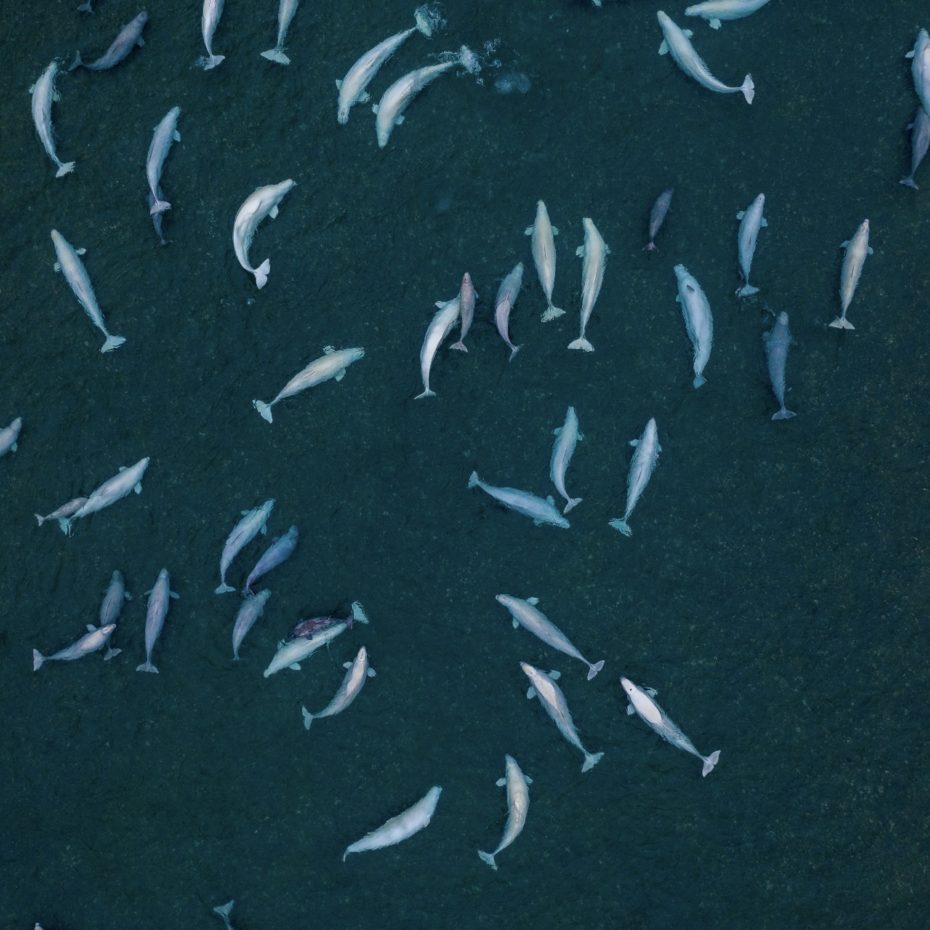
October 10, 2019 | Arctic Watch
BELUGA WHALE FACTS
Everything you need to know about beluga whales.
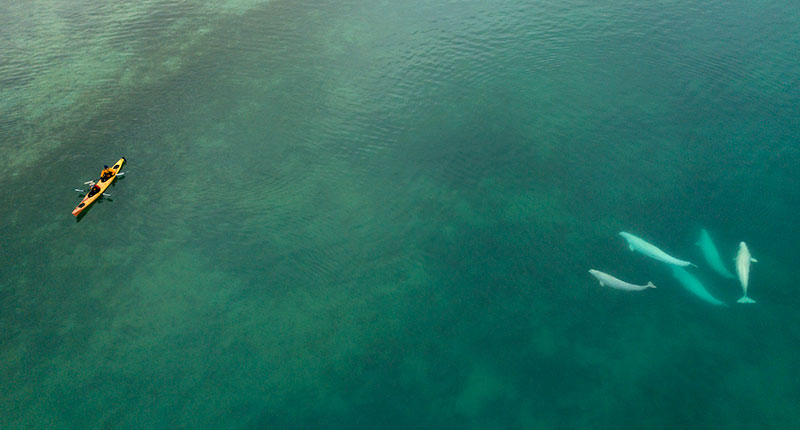
Beluga whales are gorgeous white silhouettes that glide past your kayak. They’re inquisitive whales that chirp, click and “toot” while chasing one-another in shallow water. The white whale is curious; we’ve seen then toss kelp, rocks and investigate nearly everything in their surroundings. Beluga whales are known to be one of the intelligent and playful whales in the Canadian Arctic.
We’re lucky to have these amazing creatures at our lodge Arctic Watch. Positioned in Cunningham Inlet, our lodge sees an estimated two thousand whales congregate annually in July and August to nurse, socialize and moult. Cunningham Inlet is regarded as one of the last beluga nurseries on the planet.
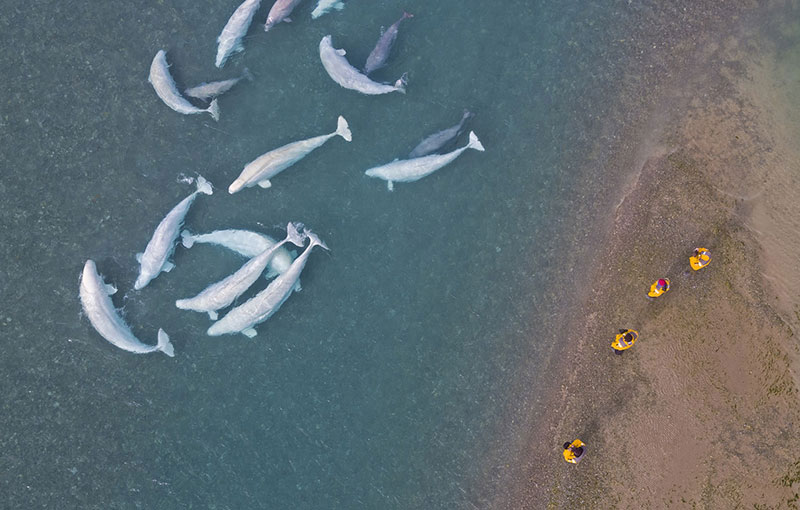
Belugas can grow up to 5 metres in length and weigh 3500 pounds. An Arctic and sub-Arctic cetacean, they belong to the family Monodontidae, along with the narwhal, and the only member of the genus Delphinapterus. Beluga whales typically live to about 30 years. Babies are born grey or nearly black, turning white between 4 and 7 years old. Adult beluga whales are white and can have yellowing skin. These animals are a toothed whale; feeding on regional food sources such Arctic char, Arctic cod, squid, octopus, scalping, herring, smelt and salmon. They are an opportunistic feeder; their habits depend on the regions and season. A great example is around Somerset Island (Cunningham Inlet), they tend to eat Arctic cod, Arctic char, sculpin and octopus. In Alaska, beluga whales are known to eat Salmon, Arctic cod, smelt, flounder and herring.
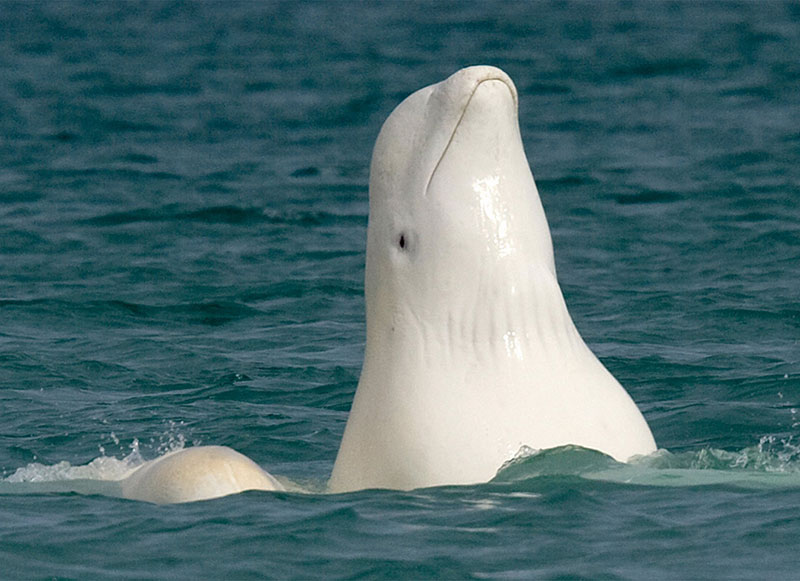
Beluga whales are often referred to as “canaries of the sea”. A highly intelligent mammal that is amongst the most vocal of whales species, they they use two forms of “sounds” - echolocation to see and vocalizations through their nasal sacs near their blowhole to “speak”. It is important to note that belugas can see within and above water (using their eyes, not echolocation).
Essentially, they speak through their nose and “see” using their forehead (the melon) to send echolocation and eyes. It is important to remember that in winter months, beluga whales will spend several months in almost complete darkness - hence the evolution of echolocation. The melon used to project echolocation is malleable; its shape changes during the emission of sounds.
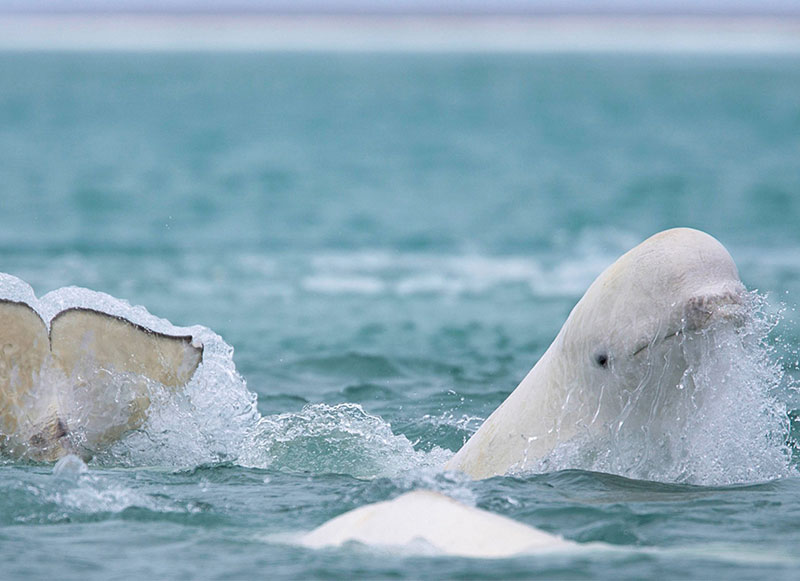
Beluga whales are gregarious - they form groups and live in social structures. Mothers will help-one-another during feeding times, often leaving an adult with several young while others feed. While little is known about their social structures, we’ve witnessed numerous adult whales working in unison to (for example) deter predators from younger whales, hunt together and more.
It is important to note that beluga whales, unlike many other whales and dolphins, have vertebrae that are not fused together. This enables the whale to turn its head without needing to rotate its entire body. This evolutionary trait allows the beluga to have an improved field of vision and makes catching prey easier. It also means that belugas tend to be more social than other whales (in comparison to their northern cousins, the Narwhal). At Arctic Watch, we’ve seen belugas swimming with their heads above water for more than 15 minutes, rubbing in shallow river water, spinning, breaching and more. See beluga whales at Arctic Watch.
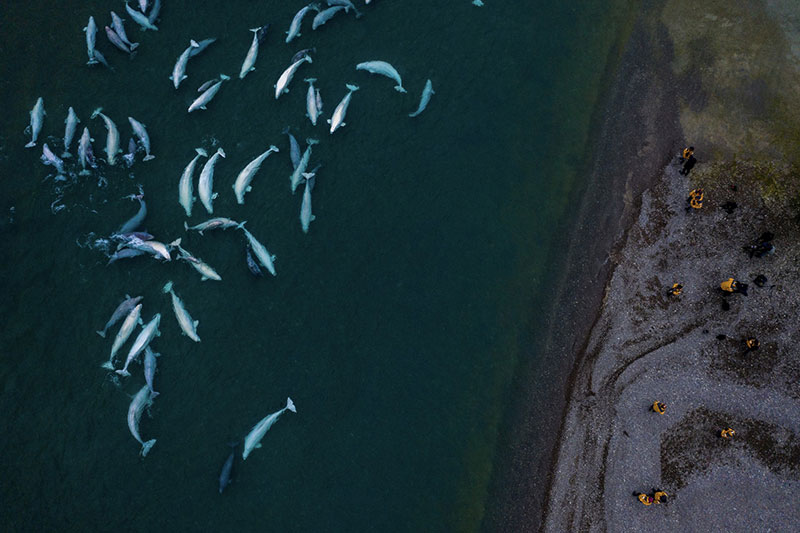
We're here to help.
We understand that booking a trip like this is a big endeavour. Please reach out to us with any questions that you might have regarding your upcoming adventure.



